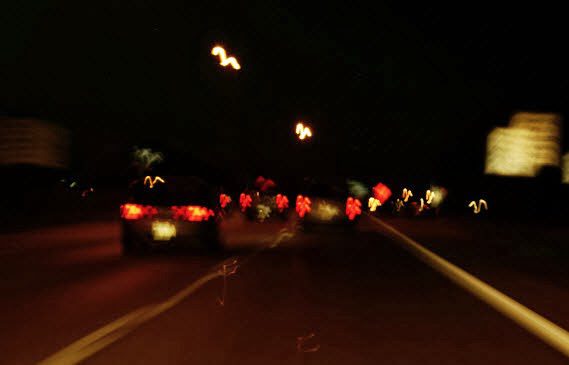Car enthusiasts love to share their hobby.
Whether arranging a long drive and cruise to a restaurant for a club or showing off a vehicle at a friend’s house, the camaraderie and sense of community is hard to miss.
While consuming an adult beverage or two is not unheard of at such events, mixing large amounts of alcohol and vehicles never turns out well.
Most people would never consider drinking heavily and climbing behind the wheel of a vehicle for the drive home, let alone climbing behind the wheel of a cop magnet with a horsepower to weight ratio that rivals the Space Shuttle. There are a few good reasons why alcohol and fast vehicles do not mix.
Slipping and Sliding
High horsepower vehicles are more sensitive to careless throttle inputs than most other vehicles. Of course, not every vehicle with plenty of horsepower is un-streetable. Modern vehicles with high horsepower levels are quite docile in daily driving; such vehicles have everything from adaptive drive by wire throttle systems to active stability management systems and traction control. With all of the electronic assistance in a modern vehicle, even the most ham-fisted drunkard would be hard pressed to lose traction as a result of suddenly accelerating.
However, not every vehicle is equipped with those systems. While Corvettes have been equipped with traction control since 1992, the Dodge Viper did not get the system until the 2013 model year. Older muscle cars and pony cars as late as the mid-‘90s lacked such features altogether.
Even when the vehicle is equipped with such features, they are only a button or two away from being disabled. A heavily modified older pony car or muscle car can be a handful without drag radials or slicks even for a sober driver; a drunk in such a vehicle may not even make it down the street.
High Performance Vehicles and Low Performance Drivers
Merely having a vehicle with high horsepower levels does not mean that one will drive at high speeds on public roads. Conversely, driving a low-powered vehicle does not guarantee responsible driving; in 2007, Al Gore’s son was clocked at triple digits in a Toyota Prius.
However, restraining the temptation to use more than a fraction of the car’s capabilities requires sound judgment, which is the sort of thing that usually disappears after downing a six-pack of beer.
According to the U.S. Federal Highway Administration, it takes the average driver between 0.75 and 1.5 seconds to perceive and react to external stimuli. An intoxicated motorist will have a much longer reaction time. Increasing one’s speed will increase the distance traveled before being able to react in a linear manner; doubling one’s speed will double the reaction distance.
However, slight increases in speed greatly increase the braking distance; a Porsche 911 Carrera will stop from 60 miles per hour in less than 100 feet, but it will take approximately 150 feet for the same vehicle to stop from just 70 miles per hour. The 911 has excellent brakes even by sports car standards; an older Mustang on worn discs and drums that are prone to fading quickly will see much more pronounced effects.
An Orlando speeding ticket lawyer would like to remind us that the increase in reaction and braking distances increase the chances of a collision occurring. When a collision does occur, higher speeds greatly increase the chance of an injury. Doubling one’s speed increases the kinetic energy of the impact to 400 percent of its previous level. Crumple zones and airbags can only do so much to save a driver who is traveling at a high rate of speed.
Most car enthusiasts know better than to drive recklessly or drink and drive. With that said, there are still thousands of people every year who are killed on American roads by intoxicated motorists.
| Written on 10/20/2013 by Debbie Ngyuen. Debbie Nguyen is a freelance designer, blogger, and car enthusiast. She has been cited with speeding but never has it been combined with alcohol. Orlando speeding ticket lawyer Katz & Phillips, P.A. steers people in the right direction after they have been clocked at excessive speeds. |
